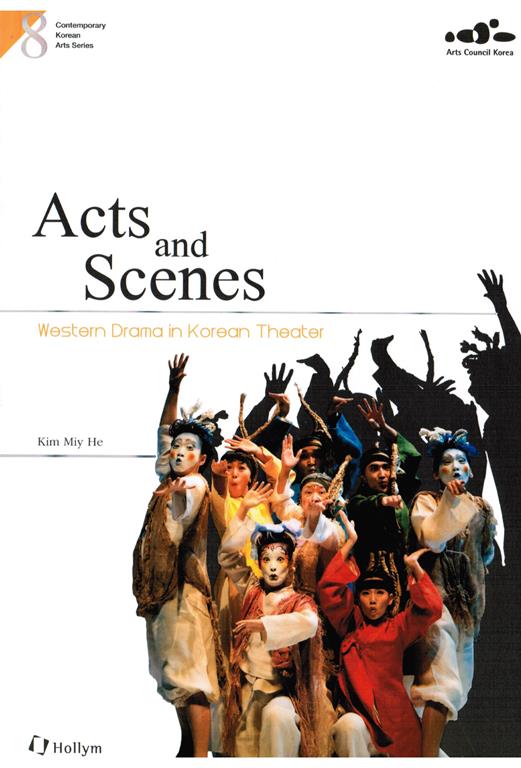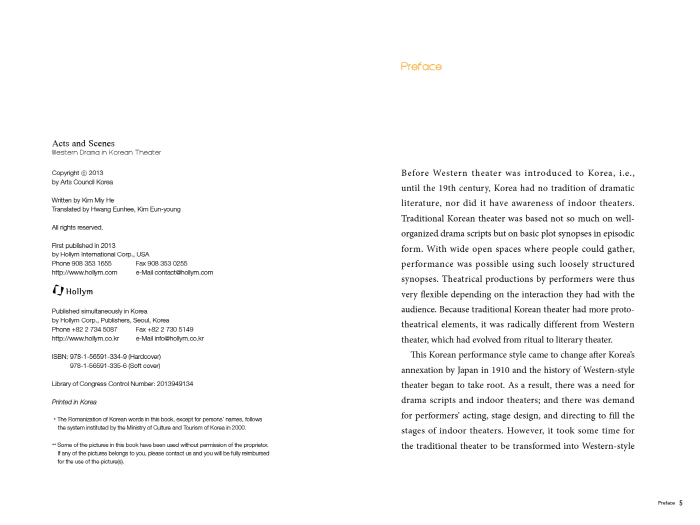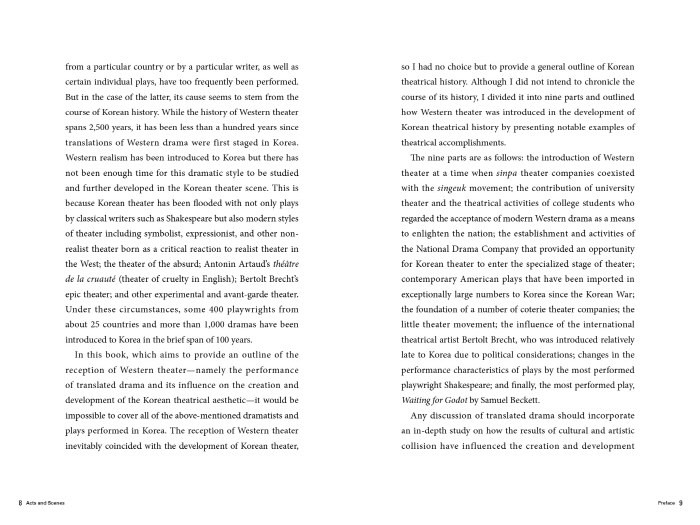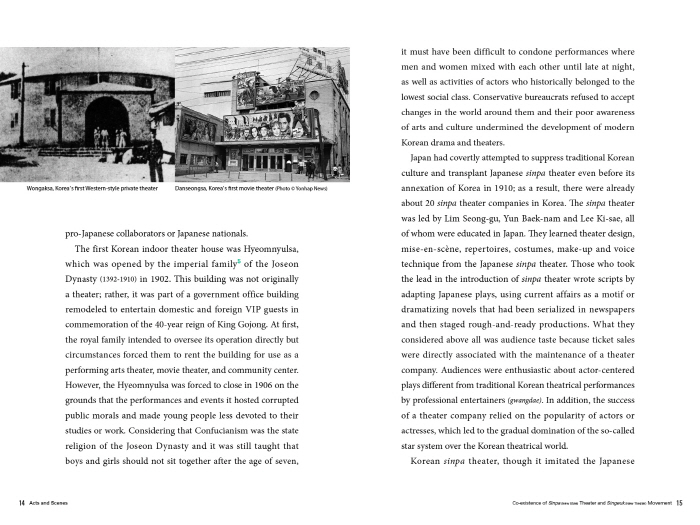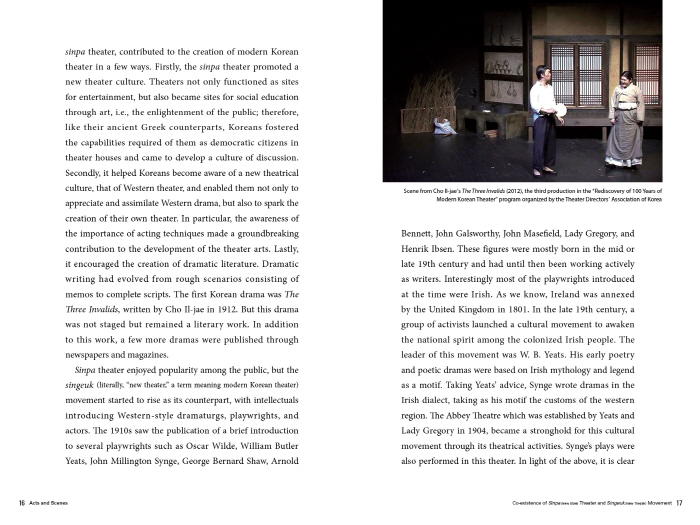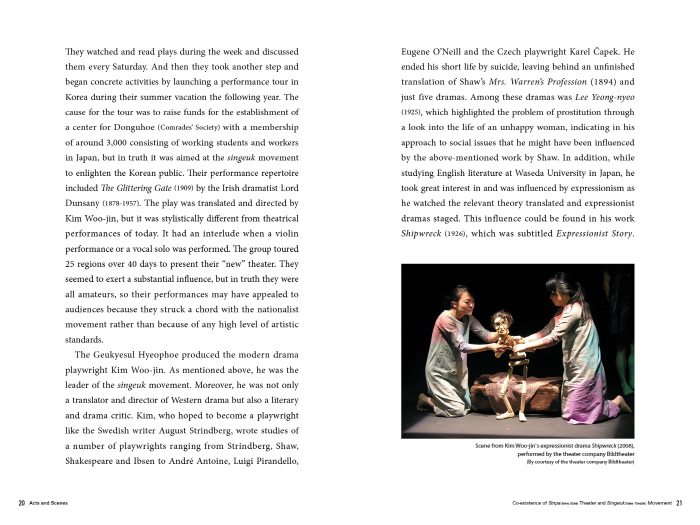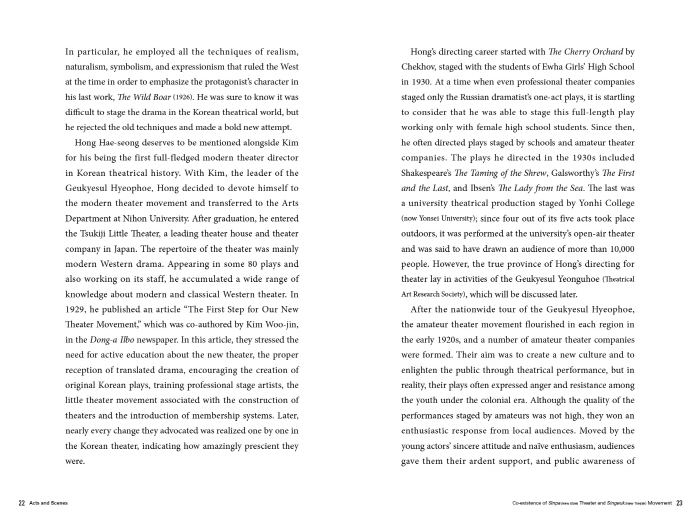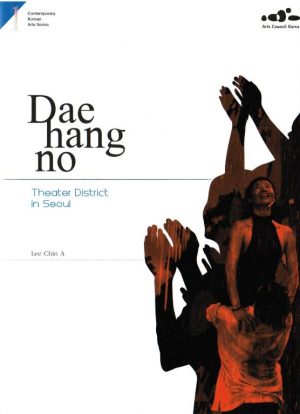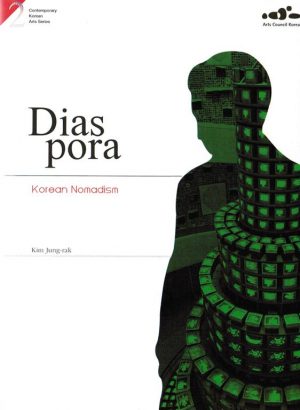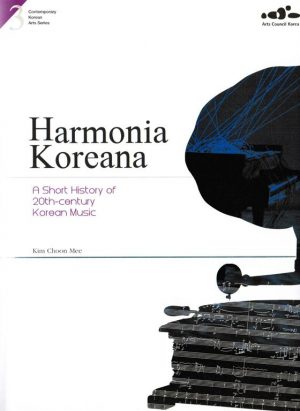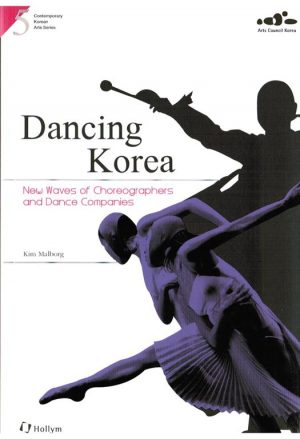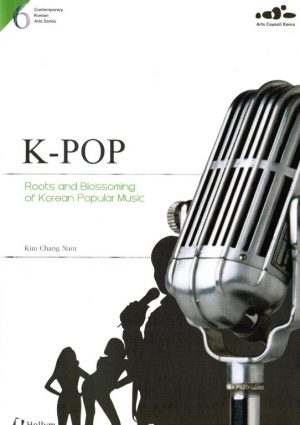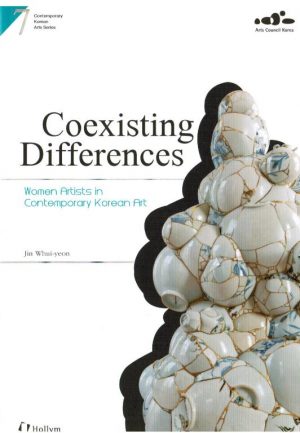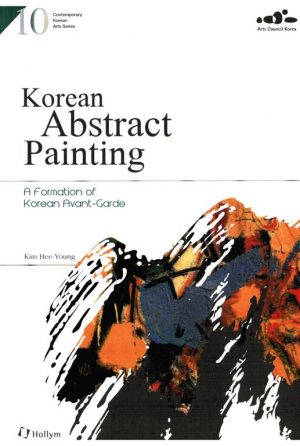Acts and Scenes
$19.50
Acts and Scenes: An Introduction of Western Drama in Korean Theater
Almost 400 playwrights from about 25 countries and more than 1,000 dramas have been introduced to Korea in the brief span of 100 years despite the fact that Korea has a vastly different culture, history, and tradition. While the history of Western theater spans 2,500 years, it has been less than a hundred years since translations of Western drama were first staged in Korea. Therefore, to understand 20th century Korean theater scene, it is necessary to examine how Western drama took root in Korea during the late 19th to the 20th centuries.
Acts and Scenes: Western Drama in Korean Theater is a brief overview of how Western drama was introduced and developed in Korea. The book is mainly divided into nine parts and outlined with notable examples of theatrical accomplishments: (1) the introduction of Western theater at a time when sinpa theater companies coexisted with the singeuk movement; (2) the contribution of university theater and the theatrical activities of college students who regarded the acceptance of modern Western drama as a means to enlighten the nation; (3) the establishment and activities of the National Drama Company that provided an opportunity for Korean theater to enter the specialized stage of theater; (4) contemporary American plays that have been imported in exceptionally large numbers to Korea since the Korean War; (5) the foundation of a number of coterie theater companies; (6) the little theater movement; (7) the influence of the international theatrical artist Bertolt Brecht, who was introduced relatively late to Korea due to political considerations; (8) changes in the performance characteristics of plays by the most performed playwright Shakespeare; and finally, (9) the most performed play, Waiting for Godot by Samuel Beckett.
Understanding the history of Western drama in the Korean theater scene, which has shifted and progressed in the currents of social transformation, means figuring out just how Korean society has been transfigured. Korean playwright always sought to internalize while using imported techniques to reflect Korean sensibilities, including the individual artists’ personal styles. Now, western drama in Korean theater scene have moved away from the phase of staging productions faithful to the original play and finally entered the phase of using it as a rich source for new theatrical creations.
Preface
01 Co-existence of Sinpa (New Style) Theater and Singeuk (New Theater) Movement
02 Contributions of University Theater
03 Western Plays Performed by the National Theater of Korea
04 The Overflow of American Contemporary Plays
05 Formation of Coterie Theater Companies and Their Repertoires
06 Little Theater Movement
07 The Belated Reception of Bertolt Brecht
08 Shakespeare: The Most Performed Playwright
09 Waiting for Godot: The Most Performed Play
Notes
Bibliography
Contemporary Korean Arts Series:
-
-
-
Harmonia Koreana
A Short History of 20th-century Korean Music (Contemporary Korean Arts Series #3)$19.50 Add to cart -
City as Art
100 Notable Works of Architecture in Seoul (Contemporary Korean Arts Series #4)$19.50 Add to cart -
Dancing Korea
New Waves of Choreographers and Dance Companies (Contemporary Korean Arts Series #5)$19.50 Add to cart -
K-POP
Roots and Blossoming of Korean Popular Music (Contemporary Korean Arts Series #6)$19.50 Add to cart -
Coexisting Differences
Women Artists in Contemporary Korean Art (Contemporary Korean Arts Series #7)$19.50 Add to cart -
Choreographers in Motion
Retrospective and Perspectives (Contemporary Korean Arts Series #9)$19.50 Add to cart -
Korean Abstract Painting
A Formation of Korean Avant-Garde (Contemporary Korean Arts Series #10)$19.50 Add to cart

